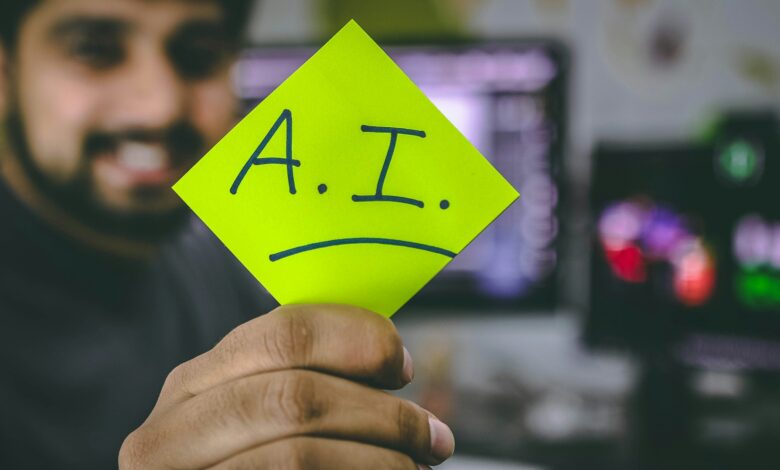
The data reveals something unexpected about artificial intelligence.
While tech headlines promise revolutionary breakthroughs, three industries quietly demonstrate AI’s real value through measurable outcomes. Healthcare, education, and enterprise operations show consistent patterns that matter more than the hype.
Healthcare Delivers Immediate Results
Remote patient monitoring represents AI’s clearest success story. Hospital readmissions dropped by up to 50% when AI systems track patient data between visits.
Consider the economics. A typical three-day hospital stay costs $30,000. When AI prevents even a fraction of unnecessary readmissions, the savings compound quickly.
The technology works through pattern recognition. AI algorithms analyze patient data streams, identifying warning signs that human monitoring might miss. When anomalies appear, the system alerts healthcare providers before conditions worsen.
Patients can now test for urinary tract infections using smartphone apps that analyze test strips. FDA-approved deep learning systems handle diagnostics that previously required clinic visits.
Education Faces a Numbers Problem
The scale of global education challenges makes AI adoption inevitable. UNESCO estimates 44 million additional teachers needed by 2030, while 250 million children remain out of school.
Traditional solutions cannot address gaps this large.
AI tutoring systems like Khan Academy’s Khanmigo guide students through problems without providing direct answers. The approach mirrors effective human tutoring while scaling to unlimited students simultaneously.
Squirrel AI processes data from 24 million students and 10 billion learning behaviors. The system breaks subjects into thousands of knowledge points, identifying specific gaps in student understanding with precision that individual teachers cannot match across large classrooms.
After one month using AI-supported instruction, Baishaping Primary School documented significant improvements in student grades, engagement, and confidence. The results suggest AI tutoring complements rather than replaces human instruction.
For educators creating materials, AI tools like Khanmigo’s Rubric Generator reduce preparation time from one hour to 15 minutes. Teachers maintain control over learning objectives while AI handles formatting and structure.
PowerPoint lesson creation represents another area where AI agents deliver significant time savings. Creating visual lessons for abstract concepts like figurative language traditionally requires hours of manual design work—searching for appropriate images, formatting slides, and organizing content flow. AI agents can now generate comprehensive lesson presentations in minutes, complete with relevant visuals and structured activities.
This proves especially valuable for teaching complex literary concepts. A lesson plan on similes for love, for instance, benefits from varied visual representations and examples that AI can generate instantly. Teachers Instruction’s similes PowerPoint lesson plan demonstrate how structured practice materials complement AI-generated presentations, providing students with both visual learning and hands-on application.
The time savings compound quickly. What once required 2-3 hours of slide creation, image sourcing, and formatting now takes 15-20 minutes of AI interaction followed by teacher review and customization. This efficiency allows educators to focus on pedagogical decisions rather than design mechanics.
Enterprise Operations Automate Decision-Making
Business applications show AI’s broadest impact potential. Goldman Sachs research indicates up to 25% of all work could be automated using generative AI systems.
The numbers support this projection. Johnson Controls processed 6,500 daily invoices manually before AI automation saved $18 million and 900,000 hours. Uber’s AI implementations target $22 million in operational savings.
These results come from AI handling routine decisions that consume human time without requiring human judgment. Invoice processing, payment approvals, and compliance monitoring represent tasks where AI accuracy exceeds human performance.
AI agents now make autonomous decisions across business domains. The market for these systems grows from $5 billion to a projected $28.5 billion by 2028, indicating widespread enterprise adoption.
The Pattern Behind Success
Three factors separate effective AI implementations from failed experiments.
First, successful AI addresses specific, measurable problems. Remote patient monitoring reduces readmissions. AI tutoring fills teacher shortages. Process automation eliminates repetitive tasks.
Second, AI works best when augmenting human capabilities rather than replacing human judgment. Healthcare providers receive alerts but make treatment decisions. Teachers use AI-generated rubrics but design learning experiences. Business managers approve AI recommendations but maintain strategic control.
Third, successful AI implementations focus on immediate, practical benefits rather than transformational promises. Cost savings, time reduction, and improved accuracy provide clear value without requiring organizational upheaval.
What This Means for Educators
The evidence suggests AI tools will become standard educational resources, similar to how word processors replaced typewriters. The transition happens gradually through practical applications rather than dramatic shifts.
For teachers creating instructional materials, AI can handle formatting, generate practice problems, and suggest improvements while preserving human creativity and pedagogical expertise. The technology saves preparation time without changing fundamental teaching approaches.
Students benefit from AI tutoring that provides immediate feedback and personalized pacing. These tools supplement classroom instruction rather than replacing teacher guidance and human interaction.
The key lies in viewing AI as sophisticated assistance rather than autonomous intelligence. The most successful implementations across healthcare, education, and business maintain human oversight while leveraging AI’s computational advantages.
As these three industries demonstrate, AI works best when it solves real problems with measurable results.


